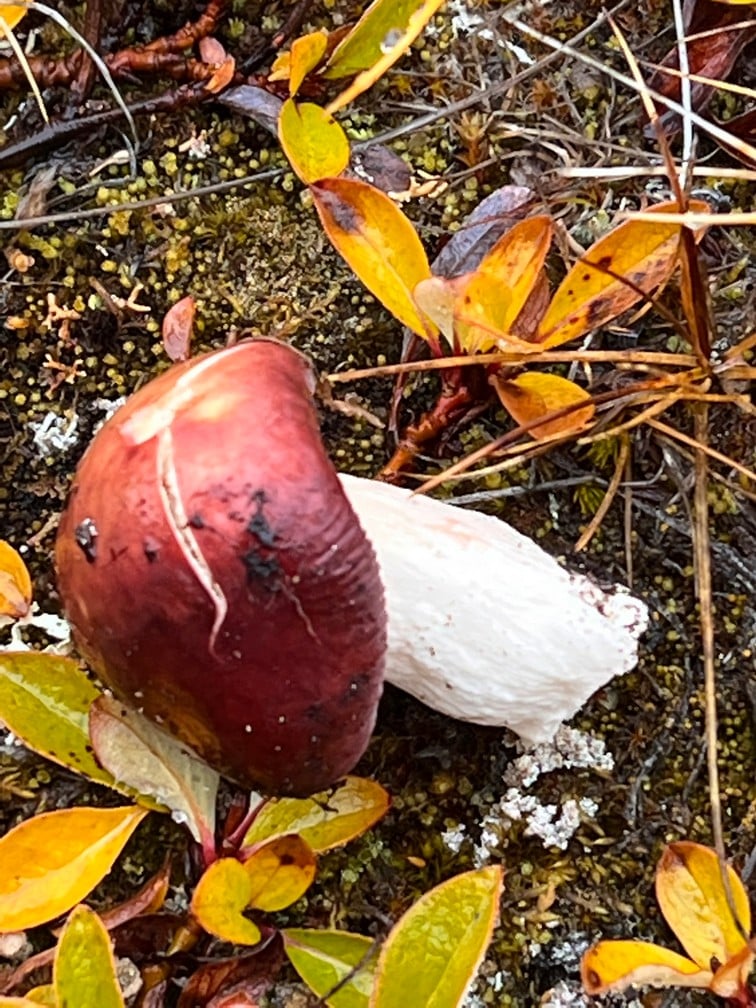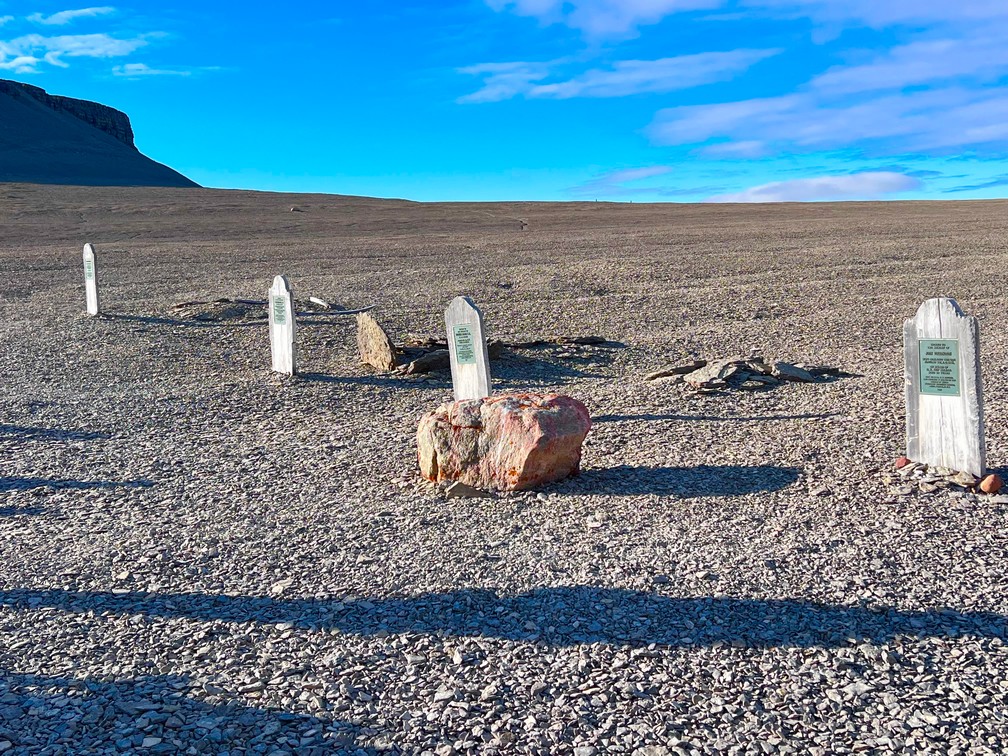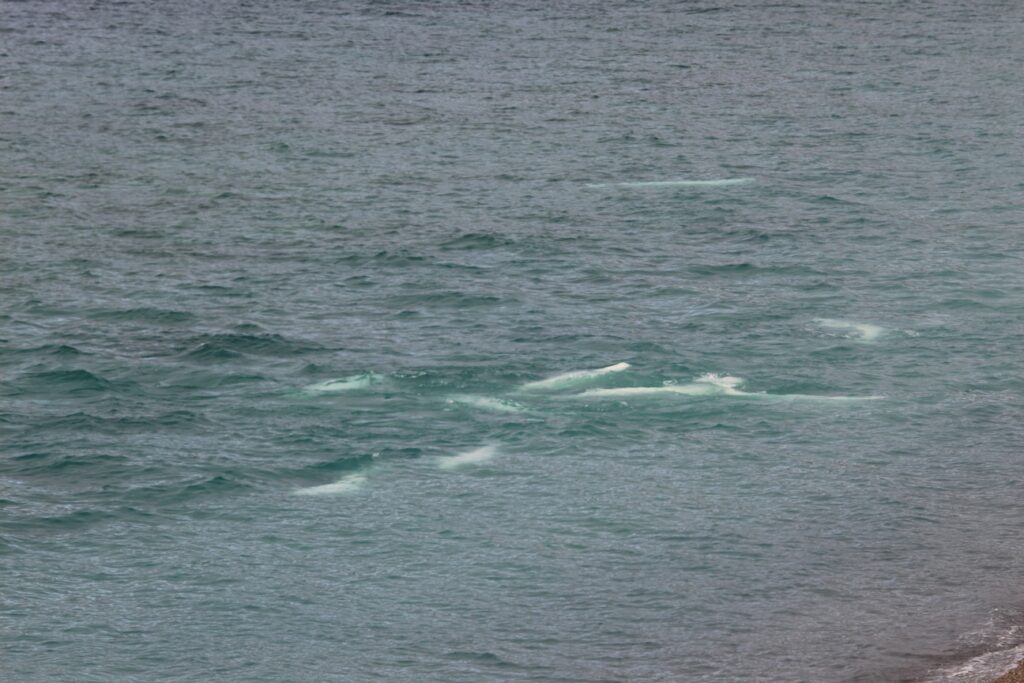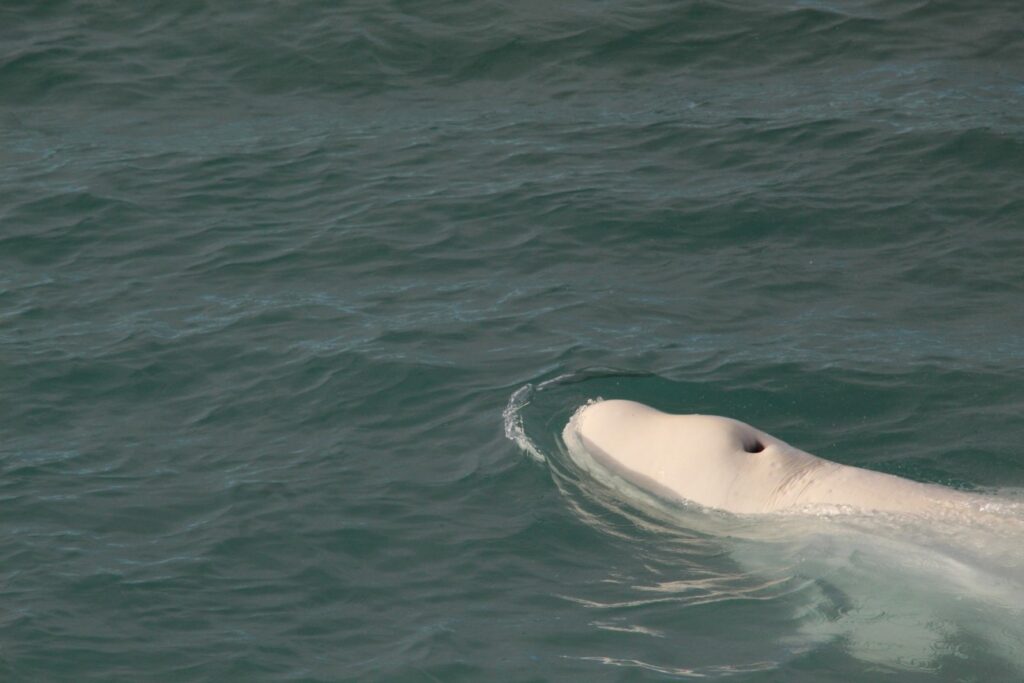US: (877) 2GO-LUXURY (877-246-5898) UK: 020 8133 3450 AUS: (07) 3102 4685 Everywhere Else: +1 530-562-9232
- Home
- Blog
- Cruise/Travel Reviews
- Seabourn’s Antarctica and Patagonia – Goldring Travel’s Third Expedition – Part I
- Seabourn’s Antarctica and Patagonia – Goldring Travel’s Third Expedition – Part II (Anticipation)
- Seabourn’s Antarctica and Patagonia – Goldring Travel’s Third Expedition – Part III (South Georgia Island)
- Seabourn’s Antarctica and Patagonia – Goldring Travel’s Third Expedition – Part IV (Hope Bay, Cuverville Island, Lemaire Channel and the Iceberg Graveyard)
- Seabourn’s Antarctica and Patagonia – Goldring Travel’s Third Expedition – Part V (Paradise Bay, Torgersen Island & Half Moon Island)
- Seabourn’s Antarctica and Patagonia – Goldring Travel’s Third Expedition – Part VI (Patagonia)
- Seabourn’s Antarctica Revisited – Part I (Pre-Cruise Perspectives and Santiago)
- Seabourn’s Antarctica Revisited – Part II (Desolation, Getting the Party Started and Perspective – Chilean Patagonia)
- Seabourn’s Antarctica Revisited – Part III (Ushuaia and The Drake Passage – Are We There Yet?)
- Seabourn’s Antarctica Revisited – Part IV (First Days in Antarctica: Revelations, Deception and Ansel Adams)
- Seabourn’s Antarctica Revisited – Part V (Antarctica Weather, Wonder & WOW!)
- Seabourn’s Antarctica Revisited – Part VI (The Falklands – It’s Ain’t Over Till Seabourn Says It Is Over!)
- Antarctica and Patagonia: An Adventure on the Seabourn Quest – Part I
- Antarctica and Patagonia: An Adventure on the Seabourn Quest – Part II (Falkland Island Penguins)
- Antarctica and Patagonia: An Adventure on the Seabourn Quest – Part III (Drake Passage and Greenwich Island-Yankee Harbour)
- Antarctica and Patagonia: An Adventure on the Seabourn Quest – Part IV (Torgersen Island/Neko Harbor – “The Lifting of the Fog!”)
- Antarctica and Patagonia: An Adventure on the Seabourn Quest – Part V (Peterman Island)
- Antarctica and Patagonia: An Adventure on the Seabourn Quest – Part VI (Captain Larsen and Class, Crossing the Southern Polar Circle & Breaking Records)
- Antarctica and Patagonia: An Adventure on the Seabourn Quest – Part VII (Waterboat Point, Kayaking…and Sadness)
- Antarctica and Patagonia: An Adventure on the Seabourn Quest – Part IX (Punta Arenas & Goldring Travel Goes Local and Culinary)
- Antarctica and Patagonia: An Adventure on the Seabourn Quest – Part X (El Brujo Glacier, Galley Market Lunch and Castro, Chile)
- Antarctica and Patagonia: An Adventure on the Seabourn Quest – Part XI (Reflections + Puerto Montt and Heading Home)
- Seabourn Sojourn in Alaska – Part 1 (Getting There)
- Seabourn Sojourn in Alaska – Part II (Calm Seas, Great Views, but a Rough Start)
- Seabourn Sojourn in Alaska – Part III (A Seabourn Moment and “Such a Hike. Oy!”)
- Seabourn Sojourn in Alaska – Part IV (Tourism, Tracy Arm, Kayaking and a Duck)
- Seabourn Sojourn in Alaska – Part V (Seabourn Ventures: Inian Islands, Icy Strait and College Fjord)
- Goldring Travel’s 2019 Culinary & Cultural Cruise -Part I (Getting There…Oy Vey…and Copenhagen)
- Goldring Travel’s 2019 Culinary & Cultural Cruise -Part II (Seabourn Signature Suite & Gothenburg, Sweden)
- Goldring Travel’s 2019 Culinary & Cultural Cruise -Part III (Olso & Sandefjord, Norway…Getting Culinary – Norwegian, Sushi and Earth & Ocean…and Discussing Whaling!)
- Goldring Travel’s 2019 Culinary & Cultural Cruise -Part IV (Newcastle upon Tyne, Thomas Keller and Complimentary Wines)
- Goldring Travel’s 2019 Culinary & Cultural Cruise -Part V (Invergordon, Scotland – Glenfiddich Whisky!)
- Goldring Travel’s 2019 Culinary & Cultural Cruise -Part VI (Scrabster, Scotland and Lerwick, Shetland Islands, Scotland – Who Knew?)
- Goldring Travel’s 2019 Culinary & Cultural Cruise -Part VII (Goldring Travel Grand – Scottish & English – Culinary Event, Galley Market Brunch & More)
- Goldring Travel’s 2019 Culinary & Cultural Cruise -Part VIII (Bremerhaven and The Kiel Canal, Germany)
- Goldring Travel’s 2018 Culinary & Cultural Cruise – Part I (Getting Ready and Looking Forward)
- Goldring Travel’s 2018 Culinary & Cultural Cruise – Part II (Barcelona and Mahon, Menorca)
- Goldring Travel’s 2018 Culinary & Cultural Cruise – Part III (Monaco and Portovenere, Italy)
- Goldring Travel’s 2018 Culinary & Cultural Cruise – Part IV (Rome and Amalfi, Italy)
- Goldring Travel’s 2018 Culinary & Cultural Cruise – Part V (Syracusa, Sicily and Crotone, Italy…and Chef David )
- Goldring Travel’s 2018 Culinary & Cultural Cruise – Part VI (Corfu, Greece – A Culinary & Cultural Day to Remember!)
- Goldring Travel’s 2018 Culinary & Cultural Cruise – Part VII (The Seabourn Chefs Let Loose! and Katakalon, Greece)
- Goldring Travel’s 2017 Culinary & Cultural (Food & Wine) Cruise – Part I (Getting There and Getting On With It)
- Goldring Travel’s 2017 Culinary & Cultural (Food & Wine) Cruise – Part II (Tangier, Morocco: Why It Is “Culinary & Cultural”; Not “Food & Wine”)
- Goldring Travel’s 2017 Culinary & Cultural (Food & Wine) Cruise – Part III (Cadiz and Portimao : Sherry, Cocktails, Cheese…and a Mixology Competition!)
- Goldring Travel’s 2017 Culinary & Cultural (Food & Wine) Cruise – Part IV (Incredible Private Cooking Demonstration and Fireworks in Gibraltar)
- Goldring Travel’s 2017 Culinary & Cultural (Food & Wine) Cruise – Part VI (Tapas…And I Mean Tapas!)
- Goldring Travel’s 2017 Culinary & Cultural (Food & Wine) Cruise – Part VII (The Famous Food & Wine Event: Chef’s Nine Court Tasting)
- Goldring Travel’s 2016 Culinary & Cultural (Food & Wine) Cruise on the Seabourn Quest – Part I
- Goldring Travel’s 2016 Culinary & Cultural (Food & Wine) Cruise on the Seabourn Quest – Part II (British Wine Tour and More)
- Goldring Travel’s 2016 Culinary & Cultural (Food & Wine) Cruise on the Seabourn Quest – Part III (Torquay, Pokémon Go and Little Things)
- Goldring Travel’s 2016 Culinary & Cultural (Food & Wine) Cruise on the Seabourn Quest – Part IV (Stornoway, Scotland and Smoked Salmon)
- Goldring Travel’s 2016 Culinary & Cultural (Food & Wine) Cruise on the Seabourn Quest – Part V (Kirkwall, Ullapool, Whiskey and the Kindness of a Stranger)
- Goldring Travel’s 2016 Culinary & Cultural (Food & Wine) Cruise on the Seabourn Quest – Part VI (Oban, Greenock and Belfast – Seabourn Moments!)
- Goldring Travel’s 2016 Culinary & Cultural (Food & Wine) Cruise on the Seabourn Quest – Part VII (Belfast, Liverpool – And Another Seabourn Moment!)
- Part I (A Look Back and A Look Forward)
- Part II (Copenhagen & The First Day)
- Part III (Flam & Alesund)
- Part IV (Slovlaer and Tromso)
- Part V (Honningsvag) – Ventures By Seabourn
- Part VI (Sea Days & Private Culinary Events)
- Part VI (Bergen, Stavanger & The Last Two Culinary Events: Shopping with the Seabourn Chef and A Cheese Tasting)
- Preparations and a Plan…Sort Of!
- Take Off…and A Fresh Perspective
- Air Travel, Rio de Janeiro, Brazil and Meat!
- The First 24 Hours and Ihhabela, Brazil
- The Little Things (Paranagua and Porto Belo, Brazil)
- Seabourn Quest’s Chef Creates An Incredible Tasting Event
- The Event: Montevideo, Uruguay- Caviar, Caviar and Sturgeon
- Part II (Perspective)
- Part III (Storms A Brewing…And A Double Rainbow!)
- Part IV (Fish & Chips…And A Great Beer)
- Part V (Cork, Ireland and a Lucky Leprechaun Named Darina Allen)
- Part VI (A Day at Sea with Special Events…And Then A Most Charming Port )
- Part VII (Bordeaux- Day 1)
- Part VII (Bordeaux- Day 2: Chateau Margaux and Chateau Lynch-Bages)
- Part VIII (Relaxing and “Basque”ing)
- Part IX (Shopping With The Chef)
- Part X (The Goldring Travel Food & Wine Tasting)
- The Beginning…Almost.
- The Beginning…Leaving On A Jet Plane
- Oy, Such Problems!
- Doing So Much and Doing Nothing
- A Sea Day and Some Thoughts About The Dining Experiences
- Shopping with the Chef and Sicilian Seafood Experiences
- Malta and Food for Thought
- Pizza or the Wintergarden Suite’s Spa? Let’s Try Both!
- The Food & Wine Tasting to Die For!
- Finding Pizza and What It Means to “Travel”
- 2009 Goldring Travel Food & Wine Cruise on the Seabourn Spirit
- Some Pre-Cruise Thoughts and My Plan
- The Start: It’s All About The Clothes???
- Walking With Wine In Venice
- Finally Onboard…Err, I Mean, Home!
- Split, Croatia: Shopping With the Chef & Chilling Out Seabourn Style
- Its About The Fish!
- Meeting Up With The Big Sister & Chef’s Surprises
- Some Final Thoughts
- The Inaugural & Maiden Voyage Travelogue
- The Inaugural & Maiden Voyage Travelogue – Part II
- The Inaugural & Maiden Voyage Travelogue – Part III (The Seabourn Sojourn Has Been Delivered!)
- Seabourn Sojourn Inaugural and Maiden Voyage – Part VI
- Seabourn Sojourn Inaugural and Maiden Voyage – Part XII – Some Videos and Photos
- (Amsterdam to Budapest) – Part I
- (Amsterdam to Budapest) – Part II
- (Amsterdam to Budapest) – Part III
- (Amsterdam to Budapest) – Part IV (Georg Breuer Riesling Tasting)
- (Amsterdam to Budapest) – Part VI
- (Amsterdam to Budapest) – Part VII (Bamberg Brewery Tour and Beer Tasting)
- (Amsterdam to Budapest) – Part VIII
- (Amsterdam to Budapest) – Part IX (Food & Wine Tasting on the AmaCerto)
- (Amsterdam to Budapest) – Part X
- (Amsterdam to Budapest) – Part XI – The Tokaji Wine Tasting
- Goldring Travel Experiences Azamara Club Cruises in Asia – Is it Amazing? Part VI (Hualien, Taiwan and Okinawa – The Kindness of Strangers)
- AmaWaterways Mekong River Cruise – Radio Interview
- Part I
- Part II
- Part III
- Part IV
- Part V (Getting There & Day 1: Hanoi)
- Part VI (Let the Tour Begin!)
- Part VII (Halong Bay…and A Monk)
- Part VIII
- Part IX (The Ship)
- Part X (The Egg)
- Part XI (Happy Pizza)
- Part XII (The Killing Fields)
- Part XIII (Our Last Days)
- Review and Reflection of the 2012 AmaWaterways AmaLotus Vietnam and Cambodia Tour and Cruise
– Avalon Myanmar – Myanmar River Cruise – April 2017
- Avalon Waterways – Myanmar – Part II (Getting Here & Getting It On)
- Avalon Waterways – Myanmar – Part III (Yangon – Day 2)
- Avalon Waterways – Myanmar – Part IV (Bhamo to Katha)
Avalon Waterways – Myanmar – Part VI (Kya Hnyat to Kyauk Myaung)
- Avalon Waterways – Myanmar – Part VII (Mingun to Mandalay)
- Avalon Waterways – Myanmar – Part VIII (Sagaing to Bagan)
Avalon Waterways – Myanmar – Part IX (The Ship: Avalon Myanmar)
Avalon Waterways – Myanmar (Burma) – Reflections: “Isn’t This Amazing!?”
*Azamara Club Cruises – Azamara Journey – Singapore to Dubai (April 8, 2018)
- Azamara Club Cruises – Azamara Journey – April 8, 2018 (Singapore to Dubai) – Revisiting the (Upgraded) Experience
- Azamara Journey Asian Adventure – Part I (Getting There and Getting Set)
- Azamara Journey Asian Adventure – Part II (Initial Impressions and Myanmar)
- Azamara Journey Asian Adventure – Part III (“Cruise Global, Go Local” in Sri Lanka)
- Azamara Journey Asian Adventure – Part IV (The Culinary Experience)
- Azamara Journey Asian Adventure – Part V (Cochin, Goa & Mumbai, India)
- Azamara Journey Asian Adventure – Part VI – Reflections (Azamara Journey vs. Regent Seven Seas Voyager)
* Azamara Quest – Southeast Asia and Japan (February 2015)
- Azamara Club Cruises in Asia – Is it Amazing? Part I
- Azamara Club Cruises in Asia – Is it Amazing? Part II
- Azamara Club Cruises in Asia – Is it Amazing? Part III (Bali and Komodo Island)
- Azamara Club Cruises in Asia – Is it Amazing? Part IV (Upscale Meets ????)
- Azamara Club Cruises in Asia – Is it Amazing? Part V (Manila, Philippines – By Day and AzAmazing Evening)
- Azamara Club Cruises in Asia – Is it Amazing? Part V (Perspectives on Experiencing Developing Ports)
- Azamara Club Cruises in Asia – Is it Amazing? Part VI (Hualien, Taiwan and Okinawa – The Kindness of Strangers)
- Azamara Club Cruises in Asia – Is it Amazing? Part VII (Doing It On Your Own – Part A – Dontonbori, Osaka)
- Azamara Club Cruises in Asia – Is it Amazing? Part VIII (Doing It On Your Own – Part B – Kyoto – Why You Can’t Rely Only On Guidebooks or TripAdvisor!)
- Celebrity Xperience – The Galapagos- Part I
- Celebrity Xperience In The Galapagos- Part II (Getting There, Pre-Cruise, Baltra & Black Turtle Cove, Santa Cruz Island
- Celebrity Xperience In The Galapagos- Part III (More Than You Expect)
- Celebrity Xperience In The Galapagos- Part IV (Sea Lions & Boobies & Penguins, Oh My!)
- Celebrity Xperience In The Galapagos- Part V (The Attack of the Flightless Cormorant…and Other Cool Stuff!)
- Celebrity Xperience In The Galapagos- Part VI (Incredible Birding, Baby Sea Lions and So Much More)
- Celebrity Xperience In The Galapagos- Part VII (Reflections & Updates on the Ships – Including the new Celebrity Flora – and What to Consider.)
– How Close to Luxury Can Celebrity’s Smallest Ship Get? – Part I
– How Close to Luxury Can Celebrity’s Smallest Ship Get? Part II
– How Close to Luxury Can Celebrity’s Smallest Ship Get? Part III
– How Close to Luxury Can Celebrity’s Smallest Ship Get? Part IV
– How Close to Luxury Can Celebrity’s Smallest Ship Get? – Some Final Observations and Thoughts– The Prologue to the Travelogue
– The Adventure Begins…With a Bump or Two
– Settling In Made Easy
– Luxury Touches Here, There and OK, Not, Everywhere…But There Are Lots of Them!
– Asian Flair Onboard and On Shore
– Private Tours, Israel and Conflicts in Perceptions and Perspective
Celebrity Equinox 2009 – Egypt…Impressive and Depressing
– Dining With the Captain and the Reidel Wine Seminar
– The Last Dinner (Tuscan Grille) and Disembarkation
– What Happens When A Class Act Meets Highly Discounted Cruise Fare– Lisbon to Monaco: Crystal As a “Move Up” & “Move Over” Luxury Option – Part I
– Lisbon to Monaco: Crystal As a “Move Up” & “Move Over” Luxury Option – Part II
– Lisbon to Monaco: Crystal As a “Move Up” & “Move Over” Luxury Option – Part III
– Lisbon to Monaco: Crystal As a “Move Up” & “Move Over” Luxury Option – Part IV (Food & Wine!)– Princess Cruises Doesn’t Treat You Like Royalty; Celebrity Cruises Does! Which is a Better Value for the Upscale Cruise Guest? Part I
– Celebrity Silhouette vs. -Royal Princess – Which Is A Better Value For The Upscale Cruise Guest? Part II: The Standard Veranda Staterooms
– Celebrity Silhouette vs. Royal Princess – Which Is A Better Value For The Upscale Cruise Guest? Part III: Treating You Right From The Start
– Celebrity Silhouette vs. Royal Princess – Which Is A Better Value For The Upscale Cruise Guest? Part IV: The Wine Lists Speak Volumes (As Do The Beverage Packages)Regent Seven Seas Voyager – August 2017
- Goldring Travel Revisits Regent Seven Seas Cruises (Seven Seas Voyager: Rome to Barcelona – August 1, 2017)
- Goldring Travel Revisits Regent Seven Seas Cruises (Seven Seas Voyager: Rome to Barcelona – August 1, 2017) – Getting There and First Impressions
- Goldring Travel Revisits Regent Seven Seas Cruises (Seven Seas Voyager: Rome to Barcelona – August 1, 2017) – Part III (Florence and Ajaccio: Starting to Drill Down on the Regent Experience)
- Goldring Travel Revisits Regent Seven Seas Cruises (Seven Seas Voyager: Rome to Barcelona – August 1, 2017) – Part IV (La Spezia and Monaco: Consistent Inconsistencies and Misses)
- Goldring Travel Revisits Regent Seven Seas Cruises (Seven Seas Voyager: Rome to Barcelona – August 1, 2017) – Part V (Antibes and Marseilles: The Ensemble Experience, Cultural Wine “Tasting” and Sette Mari – Luxury Experiences for Sure)
- Goldring Travel Revisits Regent Seven Seas Cruises (Seven Seas Voyager: Rome to Barcelona – August 1, 2017) – Part VI (Palamos, Barcelona, Palma de Mallorca & Valencia: Culinary Bliss..and Consistent Inconsistencies)
- Goldring Travel Revisits Regent Seven Seas Cruises (Seven Seas Voyager: August 1, 2017) – Caveat Emptor! Consistently Inconsistent: Not a “Six Star Luxury” Cruise Experience
– Italy and Corisca 2014 – Part I
– Italy and Corisca 2014 – Part II (Getting There, The Stateroom and First Impressions)
– Italy and Corisca 2014 – Part III (“You Can’t Teach Five Star Service” and Bonafacio, Corsica)
– Italy and Corisca 2014 – Part IV (Calvi, Monaco, Portofino, Porto Azzurro…and Stale Bread)
– Italy and Corisca 2014 – Part V (My Last Day…and How The Chef’s Team Makes It Happen)- Silversea Expedition Cruises – Silver Discoverer Indonesia/Myanmar Expedition: Part I
- Silversea Expedition Cruises –Silver Discoverer Indonesia/Myanmar Expedition: Part II (Singapore & Raffles Hotel)
- Silversea Expedition Cruises – Silver Discoverer Indonesia/Myanmar Expedition: Part III (Ship Happens: Singapore Day 2)
- Silversea Expedition Cruises – Silver Discoverer Indonesia/Myanmar Expedition: Part IV (The Ship Arrives)
- Silversea Expedition Cruises – Silver Discoverer Indonesia/Myanmar Expedition: Part V (The Expedition Begins – Orangutans & Jimmy Buffett)
- Silversea Expedition Cruises – Silver Discoverer Indonesia/Myanmar Expedition: Part VI (What is an Expedition Cruise? Why am I Here?)
- Silversea Expedition Cruises – Silver Discoverer Indonesia/Myanmar Expedition: Part VII (Myanmar – No Complaints!)
- Silversea Expedition Cruises – Silver Discoverer Indonesia/Myanmar Expedition: Part VIII (Myanmar – Developing Tourism & Finding Nemo Again)
- Silversea Expedition Cruises – Silver Discoverer Indonesia/Myanmar Expedition: Part IX (Reflections)
- Silversea Silver Shadow Alaska Cruise Review – Part I
- Silversea Silver Shadow Alaska Cruise Review – Part II
- Silversea Silver Shadow Alaska Cruise Review – Part III
- Silversea Silver Shadow Alaska Cruise Review – Part IV
- Silversea Silver Shadow Alaska Cruise Review – Part V
- Silversea Silver Shadow Alaska Cruise Review – Part VI
- Silversea Silver Shadow Alaska Cruise Review – Part VII
- Photos
- Luxury Travel
- Services Specials
- Your Expert
- Contact
































